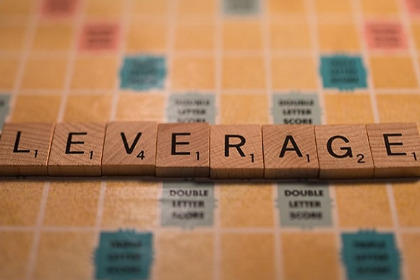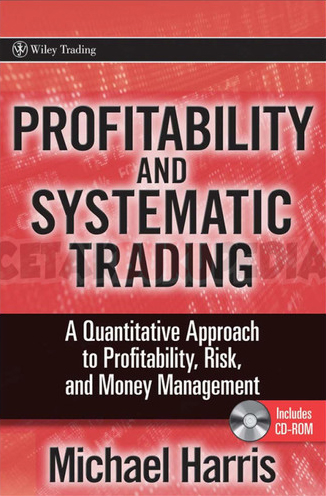Like any other trading strategy, you need money to begin day trading. But how much exactly do you need to day trade successfully?
Traders who open one or several positions in a single day are called day traders. They basically take advantage of small price movements that happen during the day and close all of their trades before the day ends. The idea is to earn a small profit in each trade and then accumulate those gains over time.

In practice, however, day trading is not as easy as it looks. People who are able to make money from day trading must devote their days to practice and even make it a part of their daily routine. Apart from that, there are also other challenges that might slow them down if they don't know how to handle them. For a start, deciding how much money to invest can be quite a stressful matter.
Contents
How Much Should You Put in Day Trading
There are two questions that you should answer before you start day trading. The first question is how much is your trading goal? Whether it's a hundred, five hundred, or a thousand bucks, you need to figure this out first before determining how much money you need to spend. Of course, the goal should be realistic or you won't be going anywhere. You might even lose money if you set your expectation too high and make reckless moves along the way.
The second question is how much money you're willing to spend on the trade? Depending on the broker, there is a minimum capital requirement to open a trading account. Some brokers may require you to deposit $50, while others may ask for a higher number or even no deposit at all.
That being said, it's possible to take the minimum amount and just start trading with it. Using your entire balance to trade without calculating the risks is certainly not recommended because the forex market is fraught with risk. In fact, it is highly advisable for day traders to risk no more than 1% of their total account balance in order to avoid losing too much money.
When it comes to day trading, you can start by opening a $100 trade at the very least. If you want more flexibility and greater income, you can spend $500. But above all that, the most recommended number is actually $5,000. The size is big enough to produce a significant amount of profit, yet small enough to maintain a reasonable degree of trading risks.
The Risks of Day Trading
Day trading is no less risky than other trading methods. The most obvious risk is the possibility that the market price could move in an unexpected direction. This is important because as a day trader, you can't really afford to have too many losing trades. Therefore, it's best to keep the risk low and aim for small, yet consistent profits.
Leverage is another concern that you need to put into consideration. Most brokers would allow traders to open a trade with a certain amount of leverage. It means you can increase the size of your position by borrowing some money from the broker to earn bigger. But keep in mind that the higher leverage, the faster it is to lose your trade should the price move against you.
How to Manage Your Trades
In order to minimize the risks, you need good trading management. The first recommendation is to apply the 1% rule to your trades. If you have $1,000 in your balance, then you should not risk more than $10 per trade. If you have $10,000 in your account, then you should not risk more than $100 per trade. By reducing the risk on each trade, you'll get a better chance of earning profit and avoid getting losing streaks that could hurt your account balance significantly.
Apart from that, it's also crucial to use stop loss in your trades. Stop losses could take you out of the market if the currency price moves in the opposite direction of your speculation and hit a certain level on the chart. In general, you could place a stop loss order around 10 pips below the current price if you expect the price to rise, or place it 10 pips above the current price if you expect the price to fall. Keep in mind that the exact location of your stop loss should depend on your position size and risk tolerance. The wider the stop loss, the more risk you put on your trade.
Case Study
If you're still unsure how much exactly is the minimum capital you should put in day trading, you can simply refer to the amount of funds in your balance. To understand this better, let's dive into the following case studies.
If You Have $100 in Your Account
Let's say you open a trading account and deposit $100. By using the 1% rule, this means that you would want to limit your risk to $1 per trade (1% of $100). The next thing to do is to calculate your trade risk, which can be done by using the following formula:
Trade Risk = Pips x Pip Value x Number of Lots
If you open a trade in EUR/USD and buy or sell one micro lot, then you should put your stop loss order within 10 pips of your entry price. Since each pip is worth $0.10 and your stop loss was 11 pips away, then your risk per trade would be $1.10 (11 x $0.10 x 1), which is more than your strategy allows it.
If You Have $500 in Your Account
Now let's imagine you were to open an account with $500. This means you can risk up to $5 per trade and buy several lots at once. For example, if you set the stop loss 10-pip wide from your entry price and buy 5 micro lots, you'd still be within your risk limit because 10 pips x $0.10 x 5 micro lots = $5. If you choose to increase the risk and set the stop loss 25 pips away from your entry price, then you can buy up to 2 micro lots and would still be within your risk limit because 25 pips x $0.10 x 2 micro lots = $5.
That being said, having at least $500 in your account balance can give you greater trading flexibility and increase your potential profit compared to $100. Even so, most day traders can only make $5 to $15 per day off that amount on a regular day.
If You Have $5,000 in Your Account
If you have this number in your account balance, you certainly get even higher flexibility and can trade with more lots per trade. Your maximum risk would be $50 (1% of $5,000) and you could start trading with mini lots because each pip is worth $1.
If you buy EUR/USD at 1./top-forex-indicators and place a stop loss 8 pips away from your initial entry price, then you could buy 6 mini lots and two micro lots. Using the same formula as the previous case studies, you can simply divide the maximum risk ($50) by (8 pips x $1) to get 6.25 for the number of mini lots that you could buy within your risk limit. Then, you can break up the 6.26 mini lots into 6 mini lots (6 x $1 x 8 pips = $48) and 2 micro lots (2 x 0.10 x 8 pips = $1.60), so in total, you only put $48 + $1.60 = $49.60 risk on your trade.
Final Thoughts
Day trading is an interesting strategy, but it is certainly not easy to do and requires a good number of starting capital. We've explained that the minimum amount you could put in day trading may vary depending on the amount of your account balance and your risk tolerance.
Considering the maximum risk limit and potential profit that you could get, $5,000 is undoubtedly the most recommended amount as it can offer high flexibility and better outcome. However, you should know that this doesn't guarantee that you will make a profit every single time. The actual profitability of your trade depends on many factors, so keep practicing and do your best in every trade.
Aside from the size of capital, day trading also puts importance on the right moment to trade. If you tend to trade on news release, day trading strategy on the NFP report could be a method to consider.

 Dedicated FREE FOREX VPS
Dedicated FREE FOREX VPS Free FOREX Virtual Private Server
Free FOREX Virtual Private Server MT4 Demo Contest, Get $500
MT4 Demo Contest, Get $500 Sign Up for an Account, Claim 60% Deposit Bonus
Sign Up for an Account, Claim 60% Deposit Bonus Free MT4/MT5 VPS 2024
Free MT4/MT5 VPS 2024 Send E-mail and Get Free Merchandise
Send E-mail and Get Free Merchandise $1K Refer a Friend Bonus for Pepperstone Pro clients
$1K Refer a Friend Bonus for Pepperstone Pro clients Maximize Your Earnings with 100% Deposit bonus
Maximize Your Earnings with 100% Deposit bonus Trade to Win, $5,000 Monthly Demo Contest
Trade to Win, $5,000 Monthly Demo Contest Claim 30% + 15% Deposit Bonus from LiteFinance
Claim 30% + 15% Deposit Bonus from LiteFinance








1 Comment
Sally
Oct 21 2022